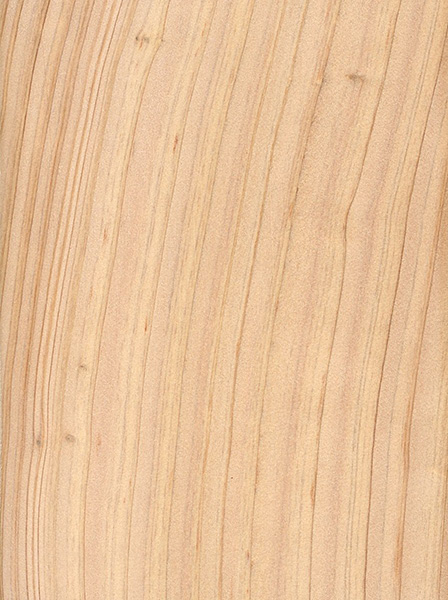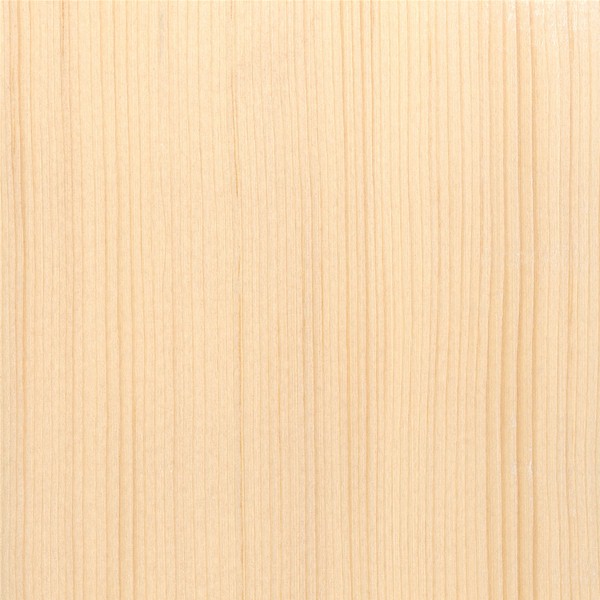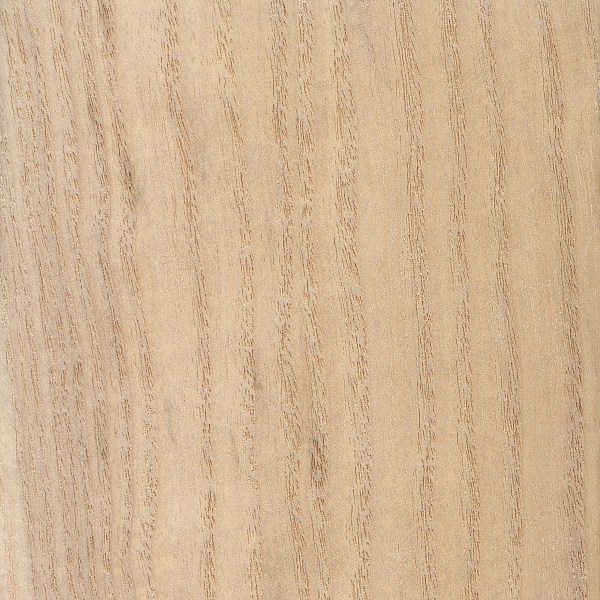IRS AUCTION NOW!
Bid by June 3rd
All of our softwoods are typically bought as a pre-graded selection. Softwoods in general tend to be very knotty and difficult to find clear materials. NNT has very high standards as far as sapwood content as well as the amount of live knots, we grade out all dead knots.

Color/Appearance: Heartwood is a light reddish brown. Narrow sapwood is pale yellow-brown to almost white and is clearly demarcated from the heartwood.
Grain/Texture: Grain is straight, with a fine uniform texture.
Endgrain: Resin canals absent; earlywood to latewood transition gradual, color contrast medium; tracheid diameter small-medium; zonate parenchyma.
Rot Resistance: Reported to be durable to very durable regarding decay resistance.
Workability: Easy to work with both hand and machine tools. Holds paint well. Stains, glues, and finishes well.
Odor: Atlantic White Cedar has a characteristic cedar-like scent.
Sustainability: This wood species is not listed in the CITES Appendices, and is reported by the IUCN as being a species of least concern.
Common Uses: Boatbuilding, carving, siding, shingles, and construction lumber.
Comments: Atlantic White Cedar has excellent stability and decay resistance, but isn’t nearly as hard or strong as its west coast counterpart, Port Orford Cedar. Atlantic White Cedar is also sometimes referred to as Southern White Cedar to differentiate it from Northern White Cedar of the Juniperus genus.

Color/Appearance: Western Redcedar is typically reddish to pinkish brown, often with random streaks and bands of darker red/brown areas.
Grain/Texture: Has a straight grain and a medium to coarse texture.
Endgrain: Resin canals absent; earlywood to latewood transition usually abrupt (or gradual if growth rings are widely spaced), color contrast medium-high; tracheid diameter medium to medium-large.
Rot Resistance: Western Redcedar has been rated as durable to very durable in regard to decay resistance, though it is not resistant to insect attack.
Workability: Easy to work with both hand or machine tools, though it dents and scratches very easily due to its softness. Glues and finishes well, though as is the case with most softwoods with closed pores, even staining can be a challenge.
Odor: Western Redcedar has a strong, aromatic scent when being worked.
Sustainability: This wood species is not listed in the CITES Appendices, and is reported by the IUCN as being a species of least concern.
Common Uses: Shingles, exterior siding and lumber, boatbuilding, boxes, crates, and musical instruments.
Comments: Western Redcedar is a commercially important lumber, used in a number of applications ranging from rough-sawn lumber for use in home construction to clear quartersawn material for classical guitar soundboards.

Color/Appearance: Color tends to be a light, yellowish brown. Sapwood is nearly white. Some boards can have scattered pockets of darker wood that have been attacked by fungi, which is sometimes called pecky cypress.
Grain/Texture: Cypress has a straight grain and a medium texture.
Endgrain: Resin canals absent; earlywood to latewood transition abrupt, color contrast medium; tracheid diameter large to very large.
Rot Resistance: Old-growth Cypress is rated as being durable to very durable in regards to decay resistance, while wood from younger trees is only rated as moderately durable.
Workability: Overall, Cypress is easy to work with hand and machine tools, though sharp cutters ought to be used to prevent lifting of the grain. Also, the wood has been reported by some sources to have a moderate dulling effect on cutting edges. Cypress has good gluing, nailing, finishing, and paint-holding properties.
Odor: Cypress has a distinct, somewhat sour odor while being worked.
Sustainability: This wood species is not listed in the CITES Appendices, and is reported by the IUCN as being a species of least concern.
Common Uses: Exterior construction, docks, boatbuilding, interior trim, and veneer.
Comments: Cypress is popular choice in construction applications where decay resistance is needed.
Cypress trees develop unique aerial roots that protrude above the ground (or water), and are especially seen on trees growing in swamps. These structures are known as knees, and are sometimes harvested (on a small scale) and sold for woodcarving purposes.
Pecky Cypress: Condition caused by a fungal attack that leaves long, narrow burrows or cavities in the wood. The fungus attacks mostly older cypress trees from the “canapy” or “umbrella” down. Once the tree is cut down, or harvested, the fungal attack stops, leaving the beautiful, unique pecky patterns.

Color/Appearance: Heartwood is a light brown, sometimes with a slightly reddish hue, sapwood is a pale yellow to nearly white. Color tends to darken with age.
Grain/Texture: Grain is straight with an even, medium texture.
Endgrain: Large resin canals, numerous and evenly distributed, mostly solitary; earlywood to latewood transition gradual, color contrast fairly low; tracheid diameter medium to large.
Rot Resistance: The heartwood is rated as moderate to low in decay resistance.
Workability: Eastern White Pine is easy to work with both hand and machine tools. Glues and finishes well.
Odor: Eastern White Pine has a faint, resinous odor while being worked.
Sustainability: This wood species is not listed in the CITES Appendices, and is reported by the IUCN as being a species of least concern.
Common Uses: Crates, boxes, interior millwork, construction lumber, carving, and boatbuilding.
Comments: Eastern White Pine is one of the most common and widely used timbers for construction lumber in the northeast United States. It’s one of the three primary commercial species of White Pine, with the other two—Sugar Pine and Western White Pine—being found on the west coast.
The long, straight trunks of Eastern White Pine were once prized for use as ship masts. The king of England’s aggravating habit of marking out and reserving all the biggest and best of these trees for use in his navy lead to the Pine Tree Riot of 1772, and played a role in the events leading up to the Revolutionary War.

Color/Appearance: Can range from a creamy white, sometimes with a subtle pinkish hue.
Grain/Texture: Sitka Spruce has a fine, even texture, and a consistently straight grain.
Endgrain: Medium sized resin canals (larger than other spruce), sparse to numerous and variable in distribution; solitary or in tangential groups of several; earlywood to latewood transition gradual, color contrast medium; tracheid diameter medium-large.
Rot Resistance: Heartwood is rated as being slightly resistant to non-resistant to decay.
Workability: Easy to work, as long as there are no knots present. Glues and finishes well, though it can give poor (blotchy and inconsistent) results when being stained due to its closed pore structure. A sanding sealer, gel stain, or toner is recommended when coloring Spruce.
Odor: No characteristic odor.
Sustainability: This wood species is not listed in the CITES Appendices, and is reported by the IUCN as being a species of least concern.
Common Uses: Lumber, boxes/crates, furniture, millwork, aircraft components, musical instrument soundboards, boatbuilding (masts and spars), wind turbine blades, and virtually any application where a wood material with a good strength-to-weight ratio is needed.
Comments: Sitka Spruce has an outstanding stiffness-to-weight ratio, and is available in large, straight-grained pieces, lending this timber to a wide range of commercial uses.

Color/Appearance: Heartwood color can range from a light pinkish brown to a deep reddish brown. Sapwood is a pale white/yellow.
Grain/Texture: Redwood has closed pores and a medium texture. The grain is typically straight, but may occasionally be wavy or irregular. Figure such as curly grain and/or burl clusters are occasionally seen.
Endgrain: Resin canals absent; earlywood to latewood transition abrupt, color contrast medium-high; tracheid diameter large-very large; parenchyma diffuse (usually visible with hand lens).
Rot Resistance: Rated as moderately durable to very durable regarding decay resistance. Lumber from old-growth trees tends to be more durable than that from younger second-growth trees.
Workability: Typically easy to work with hand tools or machinery, but planer tearout can occur on figured pieces with curly, wavy, or irregular grain. Glues and finishes well.
Odor: Redwood has a distinct odor when being worked.
Sustainability: This wood species is not listed in the CITES Appendices, but is on the IUCN Red List. It is listed as vulnerable due to a population reduction of approximately 40% in the past three generations, caused by a decline in its natural range, and exploitation.
Common Uses: Veneer, construction lumber, beams, posts, decking, exterior furniture, and trim. Burls and other forms of figured Redwood are also used in turning, musical instruments, and other small specialty items.
Comments: Capable of attaining heights of nearly 400 feet, Redwood (Sequoia sempervirens) is the world’s tallest tree species. It grows in a very limited area on the Pacific coast of northwestern United States, where heavy rainfall and cool, damp air create a unique environment for these trees. Redwood’s IUCN status is currently listed as vulnerable, but not endangered. A related species, (Sequoiadendron giganteum), sometimes known as Giant Sequoia or Wellingtonia, produces similar lumber.
Redwood lumber is very soft and lightweight, with a decent strength-to-weight ratio. It is also exceptionally stable, with very little shrinkage or seasonal movement. The mechanical values listed at the top of the page represent the averages between both old-growth lumber and second-growth lumber. On the whole, old-growth lumber tends to be slightly heavier (29 lbs/ft3 versus 26), harder (480 lbf Janka hardness versus 420), and stronger (10,000 lbf/in2modulus of rupture versus 7,900) than younger second-growth lumber.

Color/Appearance: Can vary in color based upon age and location of tree. Usually a light brown color with a hint of red and/or yellow, with darker growth rings. In quartersawn pieces, the grain is typically straight and plain. In flatsawn pieces, (typically seen in rotary-sliced veneers), the wood can exhibit wild grain patterns.
Grain/Texture: Grain is generally straight, or slightly wavy. Medium to coarse texture, with moderate natural luster.
Endgrain: Small to medium sized resin canals, infrequent and variable in distribution; solitary or in tangential groups of several; earlywood to latewood transition abrupt, color contrast high; tracheid diameter medium-large.
Rot Resistance: Douglas-Fir heartwood is rated to be moderately durable in regard to decay, but is susceptible to insect attack.
Workability: Typically machines well, but has a moderate blunting effect on cutters. Accepts stains, glues, and finishes well.
Odor: Has a distinct, resinous odor when being worked.
Sustainability: This wood species is not listed in the CITES Appendices, and is reported by the IUCN as being a species of least concern.
Common Uses: Veneer, plywood, and structural/construction lumber.
Comments: Named after Scottish botanist David Douglas, (though the scientific name is in honor of Archibald Menzies, who first described the tree in the 1790s). Douglas-Fir is technically not a true Fir (Abies genus), but is in its own genus: Pseudotsuga.
The tree itself grows to be very large, and yields a large amount of usable lumber and veneer for plywood. It is an incredibly valuable commercial timber, widely used in construction and building purposes. The wood is very stiff and strong for its weight, and is also among the hardest and heaviest softwoods commercially available in North America.

Color/Appearance: Heartwood typically a pale grayish brown, sometimes with a reddish or purplish hue. Pale white sapwood not clearly demarcated from heartwood. Overall appearance (both the wood and the tree itself) is not too unlike Catalpa, another lightweight and porous hardwood.
Grain/Texture: Grain is generally straight, with a coarse, uneven texture. Very large pores give Paulownia a striped, porous look.
Endgrain: Ring-porous, occasionally semi-ring-porous; 3-5 rows of very large earlywood pores, large to small latewood pores; tyloses common; narrow to medium rays visible without lens, normal spacing; parenchyma winged, lozenge, confluent, and marginal.
Rot Resistance: Reported to be durable regarding decay resistance, with decent weathering characteristics, though susceptible to insect attack.
Workability: Given its straight grain and light weight, Paulownia is extremely easy to work. However, due to a high silica content in some trees, the wood can have a strong blunting effect on cutting edges. Takes a wide variety of glues, stains, and finishes well.
Odor: No characteristic odor.
Sustainability: This wood species is not listed in the CITES Appendices or on the IUCN Red List of Threatened Species.
Common Uses: Plywood, veneer, furniture, boxes, millwork/siding, musical instruments (electric guitar bodies), clogs, carvings, and other small specialty items.
Comments: The other Balsa. Paulownia is used in applications where a lightweight (yet proportionately strong) wood is needed. It’s widely used in Japan for construction of the koto (a stringed musical instrument), as well as other household items, where the wood is referred to as Kiri. Paulownia is one of the fastest growing trees in the world, capable of growth rates of well over seven feet per year as a seedling! But while it’s highly appreciated and cultivated in Asia, Paulownia has come to be considered an invasive species in the United States.
Paulownia was named after Queen Anna Pavlovna of Russia (1795-1865), and is sometimes called Royal Paulownia or Princess Tree.